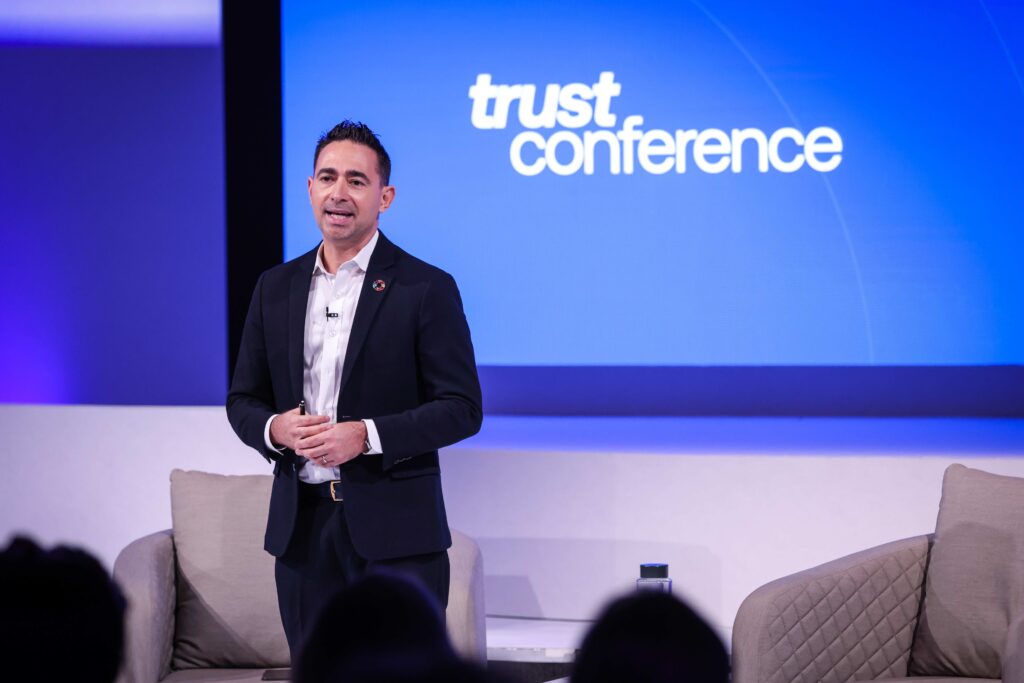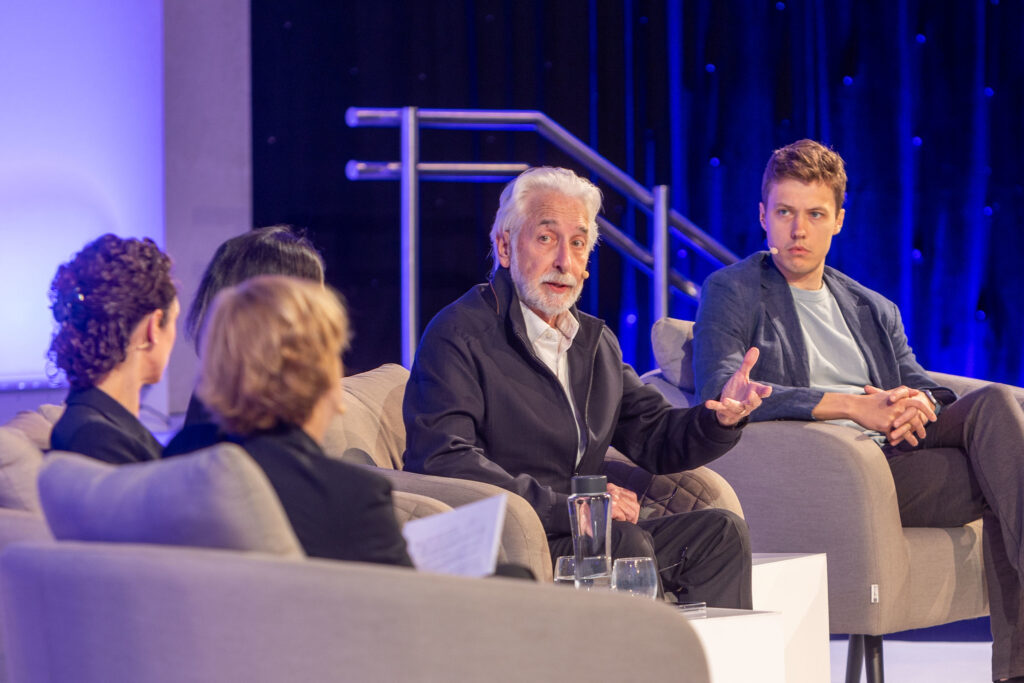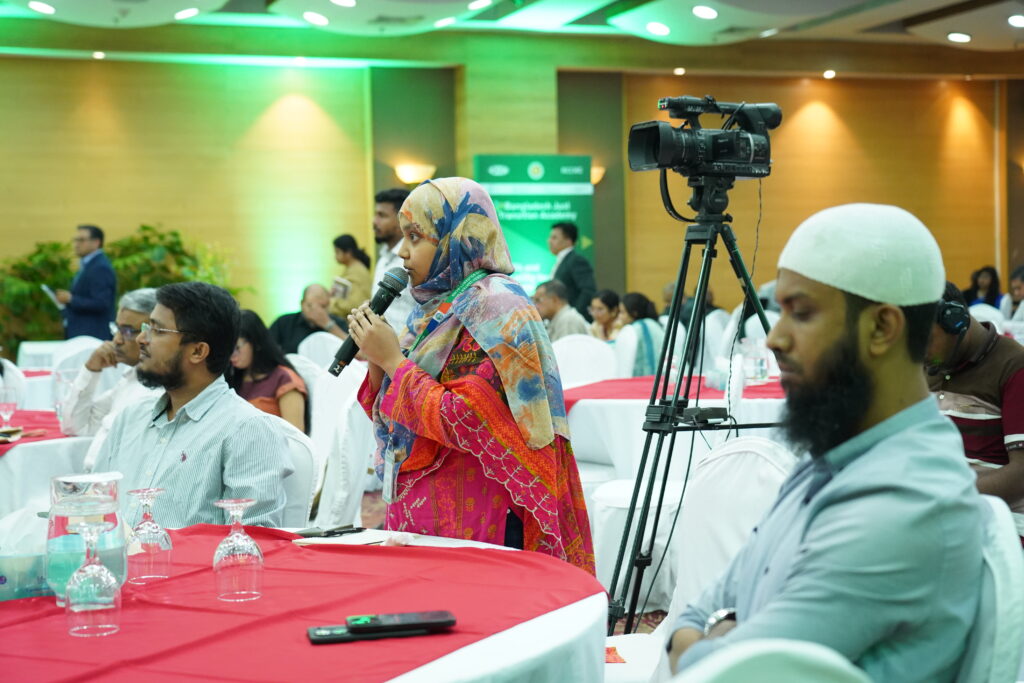On the sidelines of the 2025 International Journalism Festival in Perugia, I sat down with Oleg Grigorenko, the Editor-in-chief of 7×7 Horizontal Media, a Russian independent media outlet currently operating in exile.
Russia’s crackdown on independent media, which has stepped up since the full-scale invasion of Ukraine in February 2022, has meant that most independent media in the country have been forced to flee or shut down all together.
In response, the Thomson Reuters Foundation has been delivering a programme of support for media in exile to ensure that these outlets can continue delivering high-quality, consistent coverage of relevant issues. Our programme includes support for innovative projects, including the use of AI tools to reach new audiences.
7×7 Horizontal Media is an independent Russian regional media outlet, founded in the Komi Republic in 2011, with a focus on human rights and civil society in small Russian regions. I spoke with Oleg about how they have embraced AI tools to innovate and find new, creative ways to combat news fatigue and reach audiences in Russia with critical and accurate information.
Oleg, can you start by telling us why and how you have used AI in your journalism?
In Russia, the state controls most of the media, and access to the internet is heavily censored. Because of this, we wanted to create a simple and engaging way to get important information into the hands of the public. Telegram is one of the main ways that audiences in Russia can still consume independent news content, and it is also used for chatbots and games. So, we combined this approach and created a chatbot where the user is taken through a story on a public-interest topic, and they get to choose the path they follow along the way, like in a role-play game. Of course, we wanted to make it visually engaging for the user, but with so many different outcomes for the story, it would have taken us too long to design images for each ‘path’. So, we used AI to generate all the illustrated images which take the user through the story path of their choice. All the content is still written by journalists in our team and based on real interviews and scenarios.
As for the topics, we know that many readers in Russia are facing news fatigue when it comes to the war. But of course, it’s vital for them to have accurate information about what is happening. So, our first idea for a gamified story was on the topic of military mobilisation in September 2022. Titled, ‘The First Wave’, this game takes the reader through the story of a young student named Sasha who is facing mobilisation, yet doesn’t want to go to war and must decide whether to escape into exile. The user is given multiple scenarios and decisions to make along the way for Sasha as he tries to get to Tbilisi, in Georgia. Each path taken has a different outcome, and these represent real-life scenarios that young men were facing at this time.
When we released this first game on Telegram, it had 7,000 users in the first month, which was 7x higher than the number of readers of our news story on the same topic!
Since then, we’ve also developed successful gamified stories with AI-generated visuals on topics including the militarisation of the school curriculum in Russia, reproductive rights and access to abortions, and the compulsory military draft for young men. As with all our games, the interactive element means that the reader is put ‘in the shoes’ of someone navigating these very challenging situations, which helps them to build empathy for others and learn about their rights if they find themselves in a similar situation.
I must admit that I’m personally very passionate about gaming! So, as the Editor-in-Chief I guess that had an influence across our newsroom and it’s another reason why we experimented with this idea.

This is such an innovative approach. How has this helped you to reach audiences back in Russia?
In Russia, independent media are totally vilified. We can be labelled as ‘foreign agents’ or ‘undesirable organisations’, and so audiences are scared to engage with our news content, especially when it comes to more ‘traditional’ news. I thought that a game might help to somehow change the perception of our content – it doesn’t feel as high-risk for a reader to engage with, but it still teaches them about important issues that they might not otherwise know about.
We also try to reach Russian audiences in the ‘grey’ zone. This isn’t readers who are very pro-war or very anti-war – but those who avoid the news, politics, and information about the war. Presenting this information as a ‘game’ rather than as a serious story about their rights and the reality of war has helped us to reach and engage them. It also created a brilliant snowball effect because it’s so easy to share the game with others.
When it comes to AI, the technology has saved our team from mundane, routine tasks. We are a very small team, so it has been really useful to automate routine processes, whilst spending time on creative tasks for the project.
We use AI in other ways too – such as using it to review large data sets from all our Telegram posts over a three-year period, and then mapping it by regions, dates, and types of content. From this, we’ve been able to build a great data set of all the protests we’ve reported on across Russia’s regions, which has allowed us to track their scale, and how it has changed over the years.

It sounds like these games could have such potential! Have you thought of using them for any other circumstances?
As media in exile, we are constantly searching for new sources of funding, and recent events have made it clear that we can’t only rely on international grants, for example. So, we have considered the commercial potential of this type of content ‘gamification’. We’ve already worked with civil society organisations to produce stories, and had some great initial discussions with potential partners. We also see this as a tool that can be used for educational purposes, not just for the distribution of news information. For example, organisations that deliver educational courses could use gamification too, and we could support them with it.
What’s your advice for other media that might be considering how to use AI in their newsroom?
Have the confidence to try and to fail! I like to have fun with AI and experiment.
That being said, you also have to seriously consider the risks. We have a strict security protocol in our organisation, and we have made sure that this covers our use of AI. For instance, we never input any personal or sensitive information into AI, due to security risks. Our editorial standards also cover our use of AI.
I would suggest to other newsrooms to go through all their processes, and find the routine steps that could be automated – and give team members more time to focus on creative work. In my opinion, AI can’t help you to get new ideas, but it helps you to save time.
For newsrooms like us, with all the barriers we face in exile, and trying to reach audiences that are miles away, we have to be creative to survive.
More News
View All
The authoritarian playbook in action: Insights from Trust Conference 2025
Learn our Acting…
Read More
Antonio Zappulla: Technology is redefining power, information and influence. What is at stake?
View our CEO Antonio Zappulla’s opening remarks for Day Two of Trust Conference…
Read More
Antonio Zappulla: Three key drivers are reshaping the world and eroding democracy
View our…
Read More
Trust Conference 2025: Disinformation, lawfare and aid cuts — Civil society’s fight for survival
Trust Conference, the annual flagship forum hosted by the Thomson Reuters Foundation,…
Read More
Professor Can Yeğinsu joins Thomson Reuters Foundation Board of Trustees
We are delighted to…
Read More
Top priorities for Just Transition in Bangladesh
In one of the world’s most climate-vulnerable countries, a just…
Read More
AI Company Data Initiative drives transparency on corporate AI adoption
Now open for company…
Read More
Winners of the 2025 TrustLaw Awards Announced
This week marks the announcement of the 2025 TrustLaw Awards winners,…
Read More
How the Foundation is supporting LGBTQ+ communities worldwide
Over the last year, the Foundation has…
Read More
World Press Freedom Day: the need for the equitable and ethical adoption of AI
AI will be…
Read More

